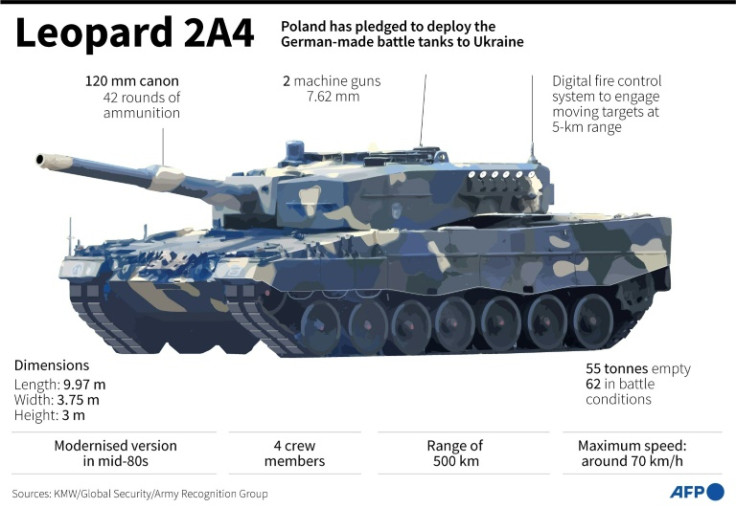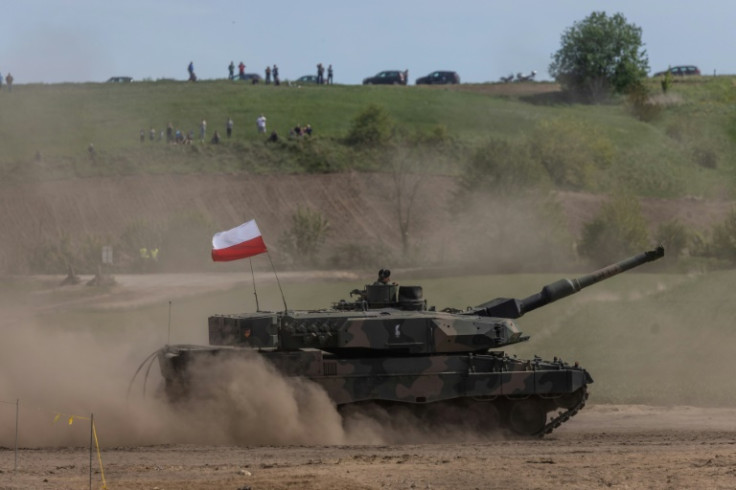Leopard: Mighty German Tank Long Sought By Ukraine

Germany's Leopard, the powerful tank sought by Kyiv to push forward against Moscow, could have a "significant" impact in the conflict.
But Ukrainian troops would need to be quickly trained up to use the sometimes complex equipment, and it would also need to be maintained.
While European allies have sent Ukraine hundreds of modernised Soviet tanks since Russia's invasion, Kyiv has pleaded for the more advanced Western armaments to bolster its fightback against Moscow.
The German-made Leopard 2 is seen as one of the best-performing models worldwide and is widely used across Europe, meaning spare parts and ammunition could be easily obtained.
First produced in the late 1970s to replace the American M48 Patton and later the later Leopard 1, the Leopard 2 is renowned for its firepower, mobility and sturdy armour.
As German daily Frankfurter Allgemeine Zeitung put it, the Leopard 2 is "sort of like the (Volkswagen) Golf of the German tank industry: an all-rounder with world recognition".
About 3,500 of the 60-ton battle tanks, developed by German weapons manufacturer Krauss-Maffei Wegmann (KMW), have been produced.
They are armed with a 120 mm smoothbore cannon, can engage the enemy while on the move and can travel at speeds of up 70 kilometres (44 miles) per hour, with a range of 450 km.
The tanks provide "all-round protection" for troops from threats such as mines, anti-tank fire and IEDs, according to the manufacturer.
They are also equipped with technology that allows their four-member crews to locate and target enemies at long range.
The last four models produced are still in use, from the 2A4 to the 2A7.
Germany has been reluctant to provide the tanks. And while some countries that have bought the tanks from Germany are willing to send them to Kyiv, they need German approval for the transfer.
Poland has said it is willing to send 14 Leopard 2 tanks to Kyiv as part of an international coalition, while Finland has said it is not opposed to shipments.
According to experts, the best approach would be for all countries willing to contribute to send 2A4 tanks.
"The same model is very important for training and logistical reasons," General Bruno Kasdorf, a former German army inspector, told media group RND.
It is not clear how quickly they would arrive, however.
German weapons manufacturer Rheinmetall, which supplies the Leopard 2's cannon and electronics and has dozens of older models, has warned it would not able to deliver its tanks to Ukraine until 2024 because of the need to refurbish and repair them.
Officials also warn that once the tanks arrive, Ukrainian troops would need to be rapidly trained on how to use the equipment, which is much more complex than the Soviet-era tanks they are used to.
That would be while also trying to get up to speed on other new gear set to arrive in Ukraine, including recently pledged French AMX-10 RC light tanks, German Marder infantry vehicles, and Bradley fighting vehicles from the United States.
Experts are nevertheless convinced the Leopards can make a difference.
If Kyiv receives about 100 of them, the effect would be "significant", according to the Britain-based International Institute for Strategic Studies (IISS).
Equipped with the Leopard 2, "an army can break through enemy lines and put an end to a long period of trench warfare," Rheinmetall CEO Armin Papperger told Germany's Bild newspaper.
"With the Leopard, soldiers can advance dozens of kilometres at a time."

© Copyright AFP {{Year}}. All rights reserved.




















